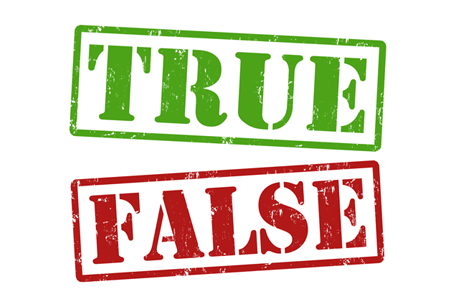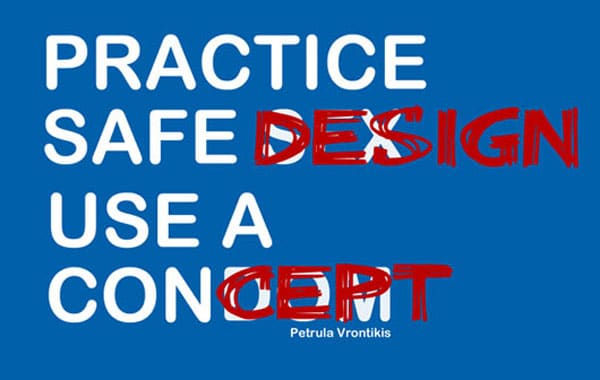The Different Forms of Mental Representation
mental-representation·@juvyjabian·
0.000 HBDThe Different Forms of Mental Representation
<center><h1>The Different Forms of Mental Representation</h1></center> <center><br/>[Image Source](http://iteps.fr)[](http://iteps.fr/wp-content/uploads/2017/02/sport-sophrologier-iteps-muret-toulouse_jpeg.png)<br/></center> The history of research in cognition recommends that there are various forms of mental representation. Paul Thagard, proposes four: * Concepts * Propositions * Rules * Analogies <strong></strong> <strong>Concept</strong> A concept is maybe the most basic form of mental representation. A concept is an idea that speaks to things we have assembled together. The concept "chair" does not allude to a specific chair, for example, the one you are sitting in now, yet is more general than that. It alludes to all conceivable chairs regardless of what their sizes, colors, and shapes. Concepts require not allude to concrete things. They can remain for theoretical ideas, for instance, "justice" or "love." Concepts can be identified with one another in complex ways. They can be connected in a hierarchical fashion, where a concept at one level of organization remains for all individuals from the class under it. "Golden retrievers" is in the category of "dogs," which has a place in the class of "animals." <strong></strong> <strong>Propositions</strong> A proposition is a statement or declaration typically postured as a simple sentence. A fundamental element of a proposition is that it can be demonstrated true or false. For example, the statement "The moon is made out of cheese" is grammatically correct and may speak to a conviction that a few people hold, however it is a false statement. We can apply the rules of formal logic to propositions to decide the legitimacy of those propositions. One logical surmising is called a syllogism. A syllogism comprises of three propositions. The first two are premises and the last is a conclusion. Take the accompanying syllogism: All men like basketball. Fred is a man. Fred likes basketball. <center><br/>[Image Source](http://www.playbuzz.com)[](http://cdn.playbuzz.com/cdn/bc93e5cc-7df5-4b8e-8581-664ebe9c7188/51d9fb70-4a4f-45be-90db-2333358b1a86.png)<br/></center> Clearly, the conclusion can not be right if both of the two premises isn't right. If it isn't true that all men like basketball, then it won't not be true that Fred likes basketball, regardless of the possibility that he is a man. If Fred isn't a man, then he could conceivably like basketball, accepting all men like it. Syllogistic reasoning of this sort is the same as deductive reasoning. You may have seen that propositions are representations that incorporate concepts. The proposition "All men like basketball" incorporates the concepts "men" and "basketball." Propositions are more modern representations than concepts since they express relationships, sometimes extremely complex ones, between concepts. The rules of logic are best idea of as computational processes that can be connected to propositions in order to decide their legitimacy. Be that as it may, logical relations between propositions may themselves be considered a different kind of representation. Logic isn't the main system for performing operations on propositions. Rules do this also. A production rule is a conditional statement of the form: "If x, then y," where x and y are propositions. The "if" part of the rule is called the condition. The "then" part is called the action. If the proposition that is contained in the condition (x) is true, then the action that is specified by the second proposition (y) ought to be done, according to the rule. The accompanying rules enable us to drive our autos: If the light is red, then step on the brakes. If the light is green, then step on the accelerator. Notice that, in the first rule, the two propositions are "the light is red" and "step on the brakes." We can likewise form more mind boggling rules by connecting propositions with "and" and "or" statements: If the light is red or the light is yellow, then stepon the brakes. If the light is green and no one is in the crosswalk, then step on the accelerator. The "or" that connections the two propositions in the first part of the rule specifies that if either proposition is true, the action ought to be done. If an "and" joins these two propositions, the rule specifies that both must be true before the action can happen. <center><br/>[Image Source](http://www.superstreetonline.com)[](http://image.superstreetonline.com/f/17234478/impp_0903_01_z+2008_mitsubishi_lancer_ralliart_fact_or_fiction+fact.jpg)<br/></center> <strong></strong> <strong>Rules</strong> Rules raise the topic of what knowledge really is. We usually consider knowledge factual. In fact, a proposition, for example, "Cake is sweet," if approved, provides factual information. The proposition is then a case of declarative knowledge. Declarative knowledge is utilized to speak to facts. It discloses to us what is and is shown by verbal communication. Procedural knowledge, then again, speaks to skill. It discloses to us how to accomplish something and is exhibited by action. If we say that World War II was battled amid the period 1939– 1945, we have shown a reality learned in history class. If we ski down a cold mountain incline in the winter, we have exhibited that we have a specific skill. It is therefore important that information processing systems have some method for speaking to actions if they are to help an organism or machine to perform those actions. Rules are one method for speaking to procedural knowledge. <strong></strong> <strong>Analogies</strong> Another specific kind of mental representation is the analogy, despite the fact that, as is brought up, the analogy can likewise be classified as a form of reasoning. Thinking analogically includes applying one's familiarity with an old situation to a new situation. Assume you had never ridden on a train, however had taken transports various times. You could utilize your comprehension of transport riding to figure out how to take a ride on a train. Applying knowledge that you as of now have and that is applicable to the two situations would empower you to finish this. In light of prior experience, you would definitely realize that you need to first decide the schedule, maybe settle on express and local service, buy a ticket, hold up in line, board, stow your luggage, and discover a seat. Analogies are a helpful form of representation since they allow us to generalize our learning. Few out of every odd situation in life is totally new. We can apply what we have effectively figured out how to comparable situations without figuring everything out all finished once more. <center><br/>[Image Source](http://www.webdesigndev.com)[](http://www.webdesigndev.com/wp-content/uploads/2013/08/Practice-Safe-Design.jpg)<br/></center> <center><br/>[](https://www.imgur.com)[](https://i.imgur.com/vaKMHFj.jpg)<br/></center> References: https://en.wikipedia.org/wiki/Mental_representation https://plato.stanford.edu/entries/mental-representation http://www.iep.utm.edu/th-th-co
👍 rcarter.witness, noval25, kuku12170, bien, subcosmos, sweetpea, nasrud, t-bot, moderndayhippie, sulev, lizanomadsoul, ninyea, ellamaeamor, darth-azrael, pinc, stevebj, aismor, benjamin.still, nanzo-scoop, mummyimperfect, ak2020, mafeeva, joshbreslauer, done, livingfree, darth-cryptic, msg768, insiders, crowdfundedwhale, donkeypong, analisa, kevinwong, airwavez, irbot, dianargenti, cryptoninja, mahmut, davidalexander, banjo, minnowsupport, endaksi1, edrivegom, gomeravibz, randyclemens, steemprentice, valth, lastminuteman, oluwoleolaide, numpypython, decibel, jhagi.bhai, gindor, timbalabuch, qwasert, pusteblume, tinashe, gamerveda, markfitzgerald, nesbitt, moneymatchgaming, bluchr, dreamarif, jasonshick, pomperipossa, jhermanbeans, whatamidoing, beng05, myday, barrie, stephen.king989, ilvacca, taica, cryptohustler, tradewonk, sarmizegetusa, mume, steemiteducation, rohits, anneke, ijoel, slowwalker, hanshotfirst, teacherspet, curie, hendrikdegrote, anwenbaumeister, rayken04, kushed, pharesim, shahzadnisar, diggerdugg, chrisdavidphoto, blackwidow7, tabea, awesomianist, mitthradiumn, steemedia, sethlinson, cebymaster, john-gpr, sasha.shade, bitopia, bitrocker2020, arrliinn, cotidiana, saimegh, robins, boombastic, toxichan, wandereronwheels, zacly, teammalaysia, alvinauh, ackhoo, coloringiship, perennial, nesterrr, stardust, timspeer, rynow, allmonitors, kristinaljfom, longpath, lasseehlers,